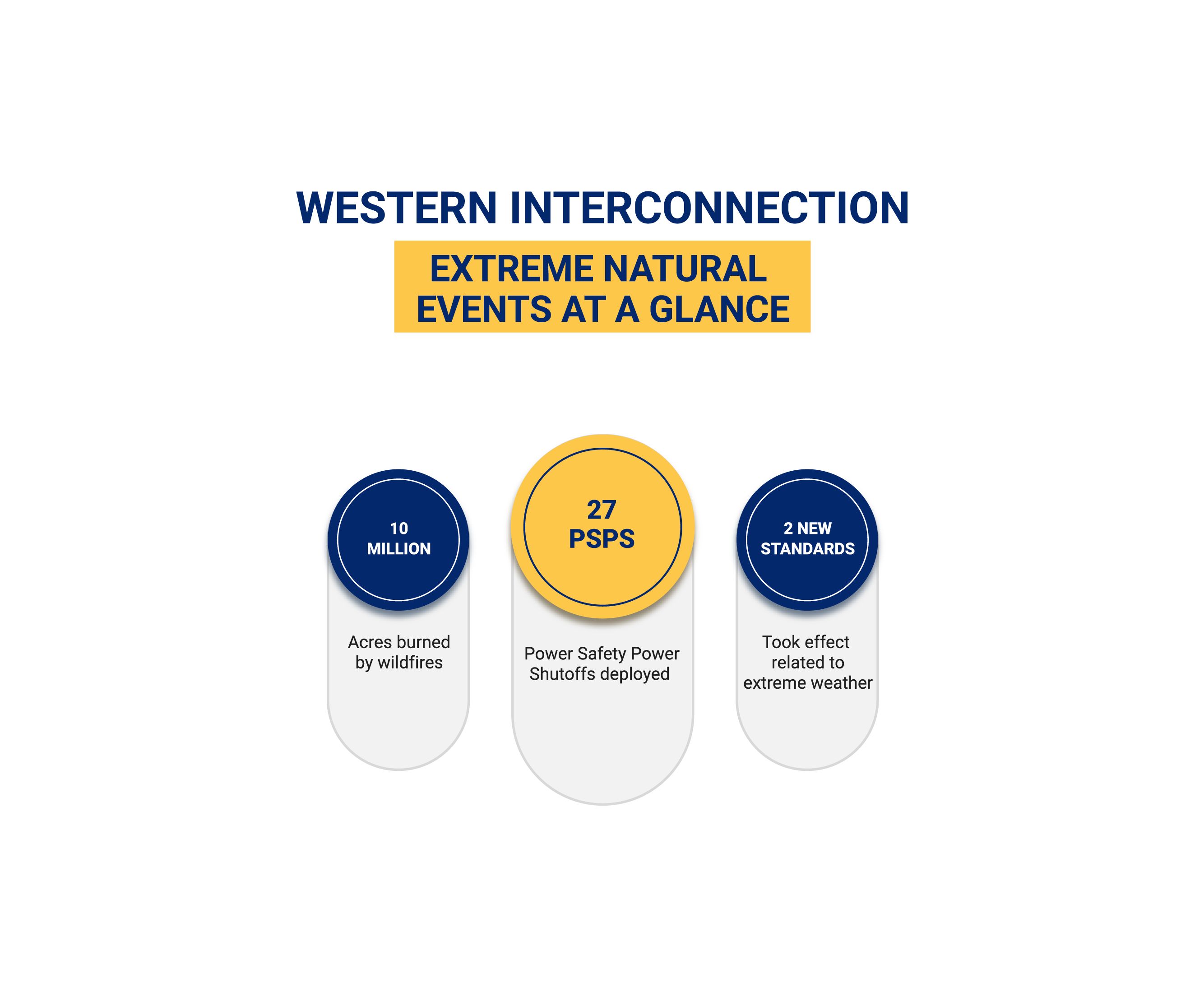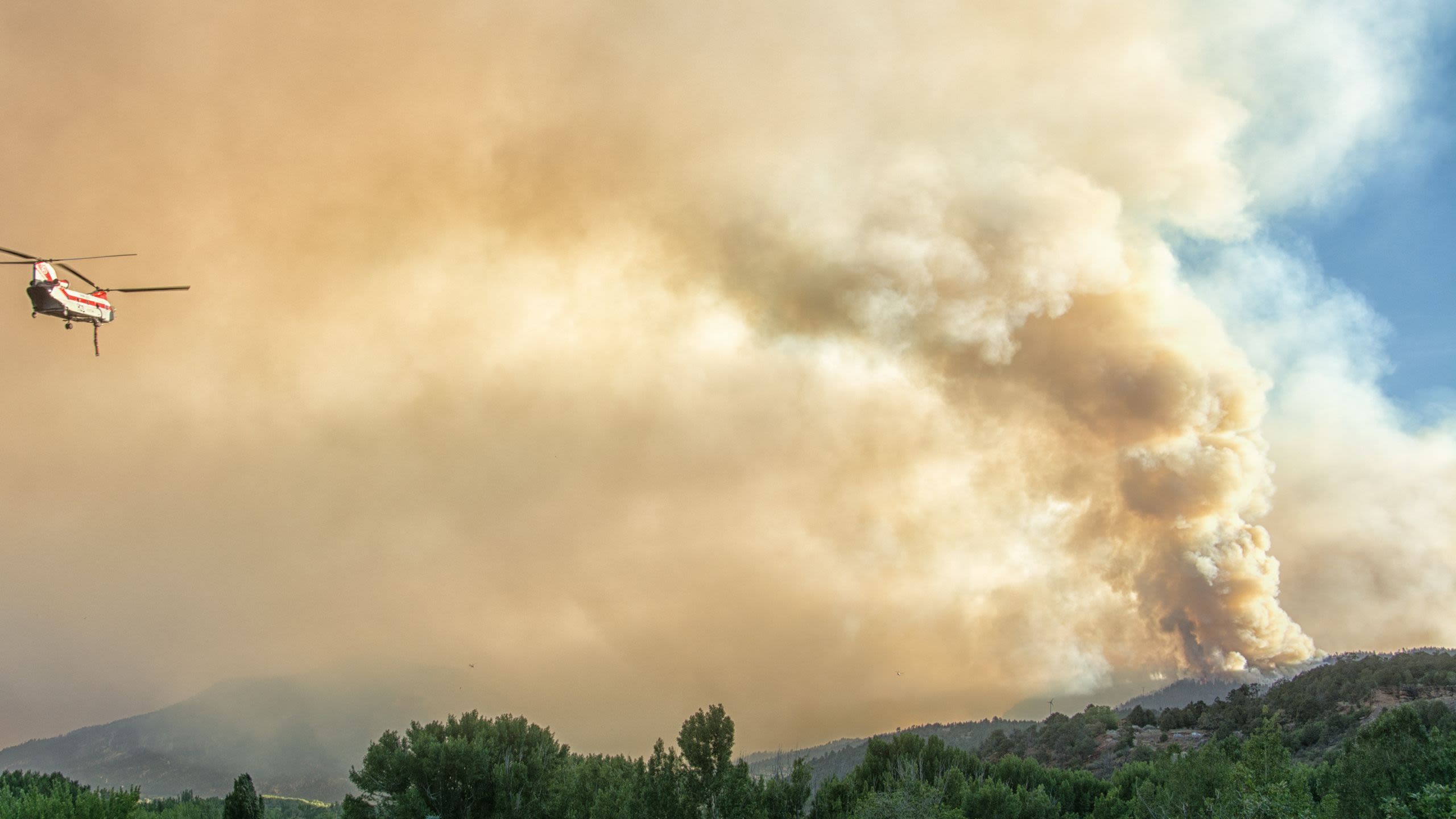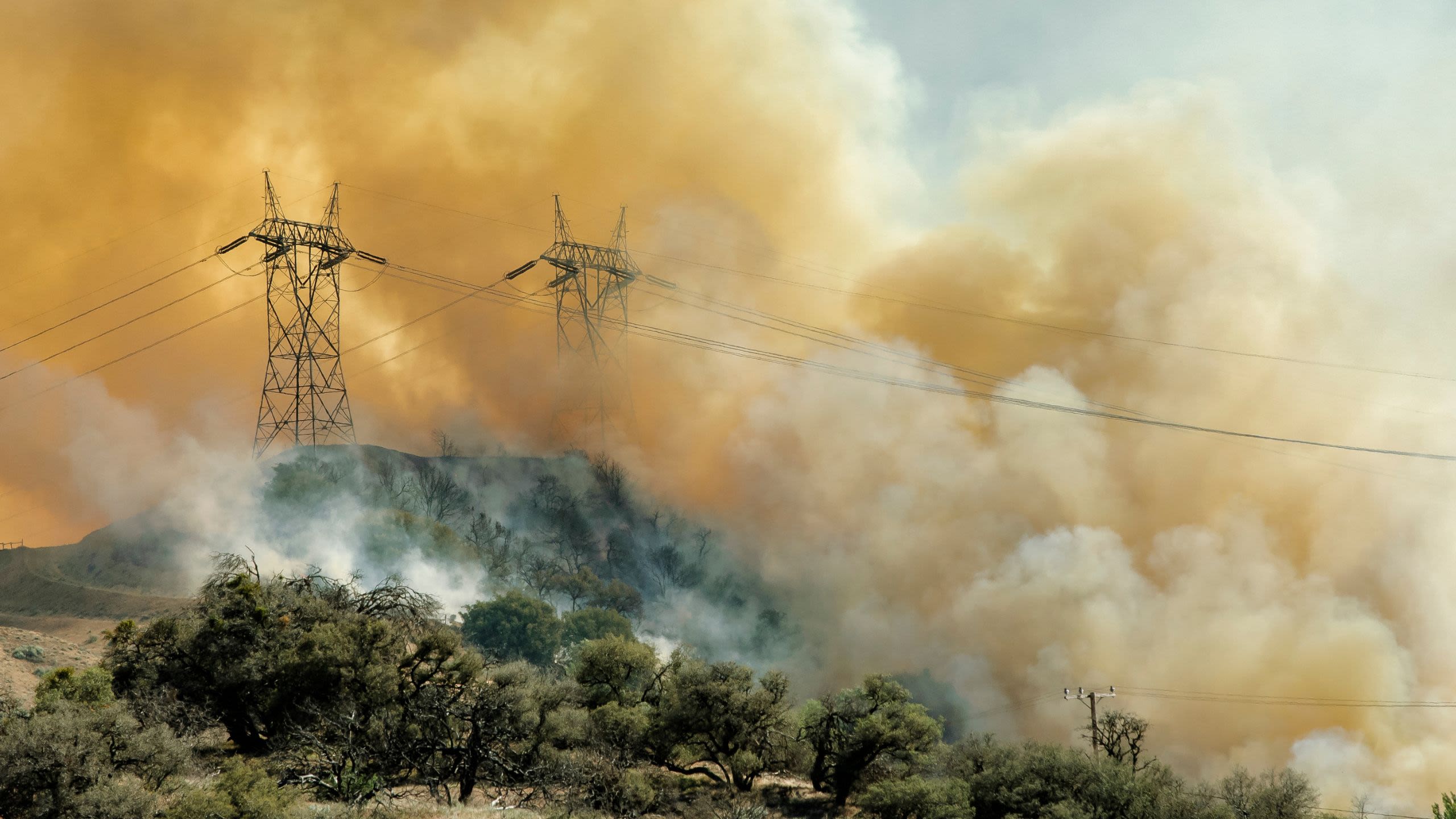State of the Interconnection 2025


Manual Load Shed During Extreme Weather Events
One measure of the system's ability to handle extreme weather events is the number of times system operators must shed load (manual load shed) to preserve the system. During the winter storms and summer heatwaves in 2024, no manual load shed occurred.
Public Safety Power Shutoffs
By the end of 2024, 16 entities included Public Safety Power Shutoffs (PSPS) in their wildfire mitigation plans. That number increased to 24 in early 2025, with four additional entities working on including PSPS in their plans later this year.
The number of PSPS issued in 2024 increased over the three previous years but did not reach historic 2020 levels.

2024 Extreme Natural Events
Record-breaking Winter Storms
In January 2024, arctic storms Gerri and Heather swept through North America in quick succession, bringing frigid cold, high winds, heavy snow, and, in some places, freezing precipitation. Record low temperatures affected the western portions of Oregon and Washington–where winters are typically mild.
Overall, the system performed well, with no system operator-initiated load shed or extended generation outages. Ahead of the storms, entities had improved winter preparedness and there was improved communication and coordination between the electric and natural gas industries. In addition, proactive generator commitment, improved gas generator stability, and customer response to Energy Emergency Alerts (EEA) likely contributed to system performance. Nearly half of the EEA-3s issued in 2024 occurred during these storms.
Extreme Summer Heat Events
During July, August, and September 2024, the Western Interconnection experienced multiple extreme heat and high demand events. In many cases these events were exacerbated by wildfire threats to major transmission facilities, which impacted the ability to import energy to serve demand. During these events, entities issued advanced notices of energy supply deficiencies and declared Restricted Maintenance Operations or No Touch Days to restrict or eliminate scheduled outages and/or avoid inadvertent outages of key transmission and generation facilities. In two separate instances, a local transmission emergency was declared due to high demand, transmission loading, and local transmission outages; however, there was no report of system-operator load shed or customer outages.
Bomb Cyclone & Atmospheric River
From November 19-23, 2024, the Pacific Northwest and Northern California experienced a Bomb Cyclone Event (when a storm rapidly intensifies, and its central barometric pressure drops significantly during a 24-hour period) combined with an Atmospheric River (a narrow corridor of concentrated atmospheric moisture). The combination of these phenomena created extreme high winds and large amounts of rain and snow. The bulk power system remained stable during this event with interruptions primarily affecting the distribution system. Approximately 895,000 customers lost power for varying periods of time periods, with most restored by November 26, 2024.
Standards
Two revised NERC standards took effect in October 2024. These standards revisions were undertaken to address reliability-related findings from the joint FERC, NERC, and Regional Entity Staff Report, February 2021 Cold Weather Outages in Texas and the South Central United States. In December 2024, NERC adopted two new standards to mitigate the impact of extreme weather on the bulk power system.
Revised Standard
EOP-011-4 requires Transmission Operators and Balancing Authorities to develop plans to mitigate operating emergencies, which can include extreme weather, and implement those plans in coordination with their Reliability Coordinator.
Revised Standard
EOP-012-2 requires Generator Owners to develop and implement plans to mitigate the reliability impacts of extreme cold weather on generating units.
New Standard
TPL-008-1 improves the way Planning Coordinators and Transmission Planners prepare for the potential impacts of extreme temperatures on the transmission system.
New Standard
BAL-007-1 requires Balancing Authorities to perform reliability assessments in preparation for emergencies, including extreme weather events, and develop corrective action plans to address identified risks.
Wildfires
2024 Wildfires
In 2024, there were four wildfire-related events during which major transmission facilities were affected, putting the system into a “Potential Open Loop” condition. While no open loop conditions developed, major transmission paths were derated, affecting the ability to transfer energy to serve demand during peak periods.
- A summer wildfire burning through a transmission corridor tripped two transmission lines. This caused several IBR plants to trip offline unexpectedly and drop over 900 MW of generation.
- In fall 2024, a wildfire in the Pacific Northwest caused a loss of transmission lines, which in turn activated a protection scheme that dropped 2,000 MW of generation.
Public Safety Power Shutoffs Increase
As wildfires continue to threaten the West, many entities are including PSPS in their wildfire mitigation plans. In 2024 there were 16 entities with plans that included PSPS. Currently, that number is 24, with four more entities planning to include PSPS in their plans this year.
During 2024, there were 20 wildfire events in which entities initiated their PSPS programs. In some cases, multiple PSPS were issued for a single wildfire, for a total of 27 PSPS. Twelve of the events interrupted customer power from a few hours to five days.
Wildfire Risk
Wildfires continued to pose an occasional threat to the bulk power system in 2024. The location of wildfires, more than their size, determines the risk they pose to the bulk power system. This makes determining the overall risk of wildfires difficult to discern because wildfire locations are difficult to predict.
In 2024, 10.1 million acres burned, with Alberta, British Columbia, California, and Oregon losing over one million acres each. By comparison, wildfires burned roughly 3.3 million acres in 2022 and nearly 14.9 million acres in 2023, with Alberta (5.4 million) and British Columbia (7 million) being most affected.
The WECC Wildfire Risk Dashboard provides information on current wildfires and bulk power system elements at risk. The interactive format allows users to explore rich data on wildfires across the West.
Xcel deploys Public Safety Power Shutoff for first time
In April 2024, Colorado experienced a severe wind event that produced significant impact to electric infrastructure on the distribution system. Approximately 275,000 customers experienced outages during the event. The event prompted Xcel Energy to implement a PSPS that affected approximately 680 miles of distribution lines and an additional 52,000 customers.
“Shutting off the power in response to extreme weather and wind events will always be done as a last resort to achieve what we can all agree matters most - public safety.”
Using lessons learned from the April event, Xcel’s 2025-2027 Wildfire Mitigation Plan includes a PSPS program for use in cases where risk is not adequately addressed by other methods. According to the plan, Xcel will base the decision to initiate PSPS on an analysis of extreme weather conditions, data intelligence models, drone inspection, and expert analysis of public safety. In its plan, Xcel committed to keep customers informed by:
- Proactively communicating about extreme weather events;
- Educating customers about PSPS, when they occur, and how to prepare for them; and
- Quickly publishing maps of affected areas, outages, and status of restoration efforts.












